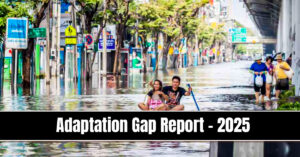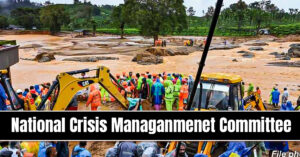Table of Contents
Hurricane Melissa (2025) was a Category 5 major hurricane — one of the most powerful tropical cyclones ever recorded in the Atlantic basin. It made landfall in Jamaica on October 28, 2025, bringing devastating winds, torrential rains, and massive flooding. With wind speeds reaching 185 mph (295 km/h) and a minimum central pressure of 892 mbar, Melissa tied with the 1935 Labor Day Hurricane as one of the most intense hurricanes to strike the Atlantic.
Melissa became the costliest natural disaster in Jamaica’s history, with preliminary damage exceeding $7.7 billion (USD) and at least 56 confirmed deaths across the Caribbean.
Hurricane Melissa (2025): Formation and Meteorological History
Hurricane Melissa began as a tropical wave off the coast of West Africa on October 16, 2025. Moving westward across the Atlantic, it organized into Tropical Storm Melissa by October 21. Initially hindered by moderate wind shear, the storm drifted slowly in the Caribbean Sea before encountering ideal conditions for rapid intensification.
Between October 25 and 27, Melissa rapidly strengthened from a tropical storm to a Category 5 hurricane. On October 28, it made a catastrophic landfall near New Hope, Westmoreland Parish, Jamaica, at peak intensity — with sustained winds of 185 mph and central pressure of 892 mbar.
Melissa weakened slightly as it crossed Jamaica and made a second landfall in Cuba near Chivirico on October 29 as a Category 3 hurricane. After passing near Bermuda as a Category 2, Melissa became an extratropical cyclone on October 31, marking the end of its destructive journey.
Hurricane Melissa (2025): Record-Breaking Statistics
Hurricane Melissa broke and tied multiple meteorological records:
-
Tied with the 1935 Labor Day Hurricane as the most intense landfalling Atlantic hurricane (pressure: 892 mbar).
-
Strongest wind gust ever recorded by dropsonde — 252 mph (406 km/h).
-
Strongest tropical cyclone globally in 2025.
-
Strongest hurricane to make landfall in Jamaica’s history.
-
Costliest natural disaster in Jamaican history ($7.7 billion).
Melissa’s unusual feature was that it never underwent an eyewall replacement cycle, allowing it to maintain Category 5 intensity longer than typical storms.
Hurricane Melissa (2025): Preparations Across the Caribbean
Jamaica
As the storm approached, the Jamaican government issued hurricane warnings and shut down airports, public transport, and institutions. The National Water Commission provided access to clean water for over 500,000 residents, while emergency shelters were opened across the island.
Haiti and the Dominican Republic
Authorities in Haiti and the Dominican Republic evacuated hundreds of families. Flood warnings and red alerts were issued in 12 provinces, and schools were closed.
Cuba
Over 735,000 people were evacuated in eastern Cuba before the storm’s landfall. The U.S. Navy also evacuated hundreds from the Guantanamo Bay Naval Base.
Impact by Country
Jamaica: Epicenter of Destruction
Melissa made landfall in Westmoreland Parish as a Category 5 hurricane, flattening communities and submerging entire towns.
-
Fatalities: 22 confirmed, with several missing.
-
Damage: $7.7 billion (USD).
-
Power Outages: Over 530,000 residents lost electricity.
-
Infrastructure: Roofs were ripped off, homes destroyed, and 90% of Black River town was damaged.
-
Airports & Ports: Sangster International Airport was flooded and partially collapsed.
The Saint Elizabeth Parish was hit hardest — described as “underwater” with entire villages obliterated. The Black River Hospital lost its roof, and many schools, including St. Elizabeth Technical High School, were destroyed.
Haiti: Floods and Landslides
-
Fatalities: 30 confirmed, 20 missing.
-
Injuries: 15+.
-
Damage: Hundreds of homes destroyed, massive flooding in Petit-Goâve and Port-au-Prince.
Dominican Republic
-
Fatalities: 4 confirmed.
-
Impact: Over 1.1 million people lost water access, 56 aqueducts shut down, and major road collapses reported.
Cuba
-
Landfall: October 29, near Chivirico, as Category 3.
-
Damage: “Considerable” flooding and landslides in Santiago de Cuba; 16 U.S. Navy homes at Guantanamo deemed uninhabitable.
Bahamas & Bermuda
-
Bahamas: Wind gusts of 85 mph on Crooked Island.
-
Bermuda: Peak wind gusts reached 98 mph; minimal structural damage reported.
Aftermath and Relief Efforts
Following the disaster, Jamaica declared a national emergency. International aid poured in:
-
The Miami Heat basketball team and partners donated $1 million in relief supplies.
-
South Florida aid groups mobilized to send medical and food support.
-
CARICOM and regional agencies began coordination for rebuilding infrastructure and housing.
Reconstruction efforts are expected to take years, with a focus on resilient infrastructure to withstand future storms.
Lessons and Climate Context
Hurricane Melissa underscores the growing intensity of tropical cyclones linked to climate change and warmer ocean temperatures. Meteorologists highlighted that sea surface temperatures exceeding 30°C fueled Melissa’s rapid intensification — a pattern increasingly observed in the Atlantic basin.
Experts warn that Caribbean nations must strengthen early warning systems, urban planning, and climate adaptation measures to mitigate future disasters.
Conclusion
Hurricane Melissa (2025) will be remembered as a historic and catastrophic storm — one that tested the resilience of the Caribbean and showcased the destructive power of a warming planet. As recovery and rebuilding continue, the lessons from Melissa will shape future disaster preparedness and climate resilience strategies across the region.


 UNEP Adaptation Gap Report 2025: Running...
UNEP Adaptation Gap Report 2025: Running...
 National Crisis Management Committee (NC...
National Crisis Management Committee (NC...
 APEDA Facilitates First-Ever Air Shipmen...
APEDA Facilitates First-Ever Air Shipmen...




















